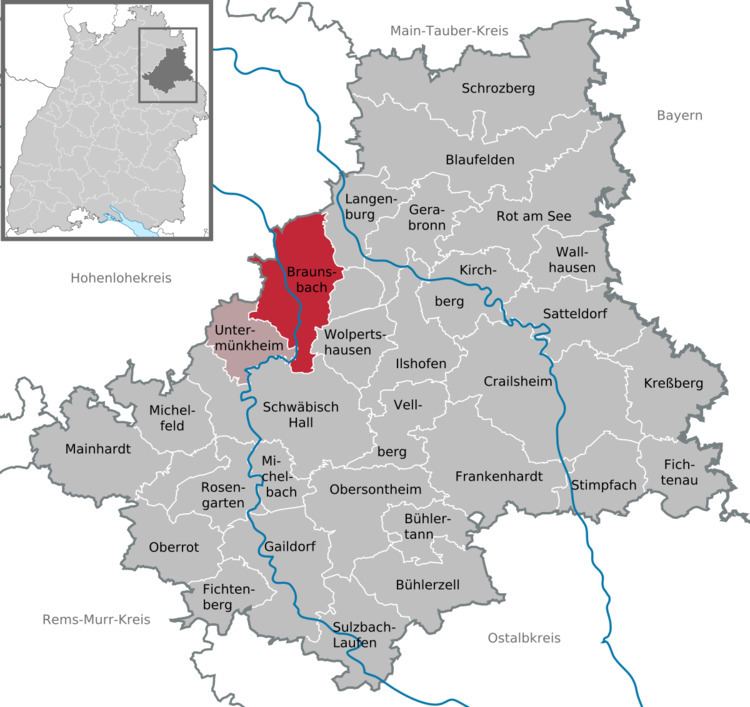Country Germany Admin. region Stuttgart Time zone CET/CEST (UTC+1/+2) Area 52.85 km² Population 2,376 (31 Dec 2008) Dialling code 07906 | Postal codes 74542 Local time Thursday 8:50 PM Postal code 74542 Administrative region Stuttgart | |
 | ||
Weather 5°C, Wind SW at 13 km/h, 67% Humidity | ||
Braunsbach is a municipality in the district of Schwäbisch Hall in Baden-Württemberg in Germany. It is on the Kocher river, about 15 kilometres (9.3 mi) from the county seat of Schwabisch Hall. The town is bordered to the north by the town Künzelsau, the county seat of Hohenlohe, in the east by the town of Langenburg, on the southeast by Wolpertshausen, in the south by the town of Schwäbisch Hall, in the southwest by Untermünkheim and in the west by Kupferzell in Hohenlohe.
Contents
Map of Braunsbach, Germany
History
Braunsbach was formed in February 1972 by the voluntary merger of the formerly independent communities of Arnsdorf, Braunsbach, Döttingen, Geislingen am Kocher, Jungholzhausen, Orlach and Steinkirchen.
In late May 2016, severe weather led to flooding of Orlacher Bach and Schlossbach within 3 hours that strewed rubble across the town causing large damage but no casualties.
Points of interest
The Girl from Orlach
"The Girl from Orlach" is a ghost story of the Biedermeier whose protagonist, Magdalena Gronbach, allegedly was capable of extrasensory perception. In February 1831 a white ghost of a woman appeared to her several times. Always when she appeared, a small fire broke out in the house. She said she was the Cistercian nun Mariane Susanne from Orlach who had been born just as Magdalena on September 12, but not in 1812, but precisely 400 years before that, i.e. in 1412. She implored salvation from Magdalena, and when Magdalena wanted to know which reward she would receive she replied: "Do not lay up treasures on earth!" In early June of the same year the ghost of a Capuchin friar appeared to her in the form of a dark menacing black shadow. She fell into a trance and in this state answered all questions she was asked. Thereupon many people came from all over the country to ask for advice regarding what would happen in the future. After having observed Magdalena for five weeks the chief medical officer Justinus Kerner concluded that this was a "state of possession."
